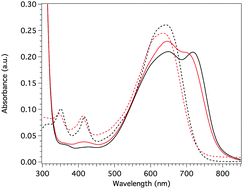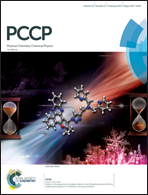Cyclopentadithiophene organic core in small molecule organic solar cells: morphological control of carrier recombination†
Abstract
Two new planar and symmetrical A–D–A (electron acceptor–electron donor–electron acceptor) small molecules based on a commercial cyclopentadithiophene derivative have been synthesized for solution processed small molecule organic solar cells. The aim was to synthesise the molecules to be energetically identical (similar HOMO–LUMO energy levels) in order to assign the differences observed to changes in the film morphology or to differences in the interfacial recombination kinetics or both. Devices were electrically characterized under one sun simulated (1.5 AM G) conditions by determining current–voltage curves, light harvesting efficiencies and external quantum efficiencies. Moreover, time-resolved photo-induced techniques such as photo-induced charge extraction and photo-induced transient photo-voltage were also performed. The results demonstrate that, despite having the same core, i.e. cyclopentadithiophene, the use of one hexyl chain instead of two in the organic molecule leads to a greater control of the molecular ordering using solvent vapour annealing techniques and also to better solar cell efficiency.



 Please wait while we load your content...
Please wait while we load your content...